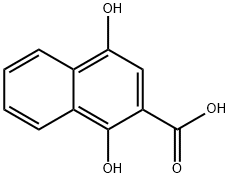SAFETY INFORMATION
| Signal word | Warning |
|---|---|
| Pictogram(s) |
 Exclamation Mark Irritant GHS07 |
| GHS Hazard Statements |
H315:Skin corrosion/irritation H319:Serious eye damage/eye irritation H335:Specific target organ toxicity, single exposure;Respiratory tract irritation |
| Precautionary Statement Codes |
P302+P352:IF ON SKIN: wash with plenty of soap and water. P305+P351+P338:IF IN EYES: Rinse cautiously with water for several minutes. Remove contact lenses, if present and easy to do. Continuerinsing. |
COMPUTED DESCRIPTORS
| Molecular Weight | 204.18 g/mol |
|---|---|
| XLogP3 | 2.5 |
| Hydrogen Bond Donor Count | 3 |
| Hydrogen Bond Acceptor Count | 4 |
| Rotatable Bond Count | 1 |
| Exact Mass | 204.04225873 g/mol |
| Monoisotopic Mass | 204.04225873 g/mol |
| Topological Polar Surface Area | 77.8 Ų |
| Heavy Atom Count | 15 |
| Formal Charge | 0 |
| Complexity | 253 |
| Isotope Atom Count | 0 |
| Defined Atom Stereocenter Count | 0 |
| Undefined Atom Stereocenter Count | 0 |
| Defined Bond Stereocenter Count | 0 |
| Undefined Bond Stereocenter Count | 0 |
| Covalently-Bonded Unit Count | 1 |
| Compound Is Canonicalized | Yes |
PRODUCT INTRODUCTION
description
1,4-dihydroxy-2-naphthoic acid is a naphthoic acid that is 2-naphthoic acid substituted by hydroxy groups at positions 1 and 4. It has a role as an Escherichia coli metabolite. It is a dihydroxy monocarboxylic acid, a naphthoic acid, a member of naphthalenediols and a naphthohydroquinone. It is functionally related to a 2-naphthoic acid. It is a conjugate acid of a 1,4-dihydroxy-2-naphthoate.

